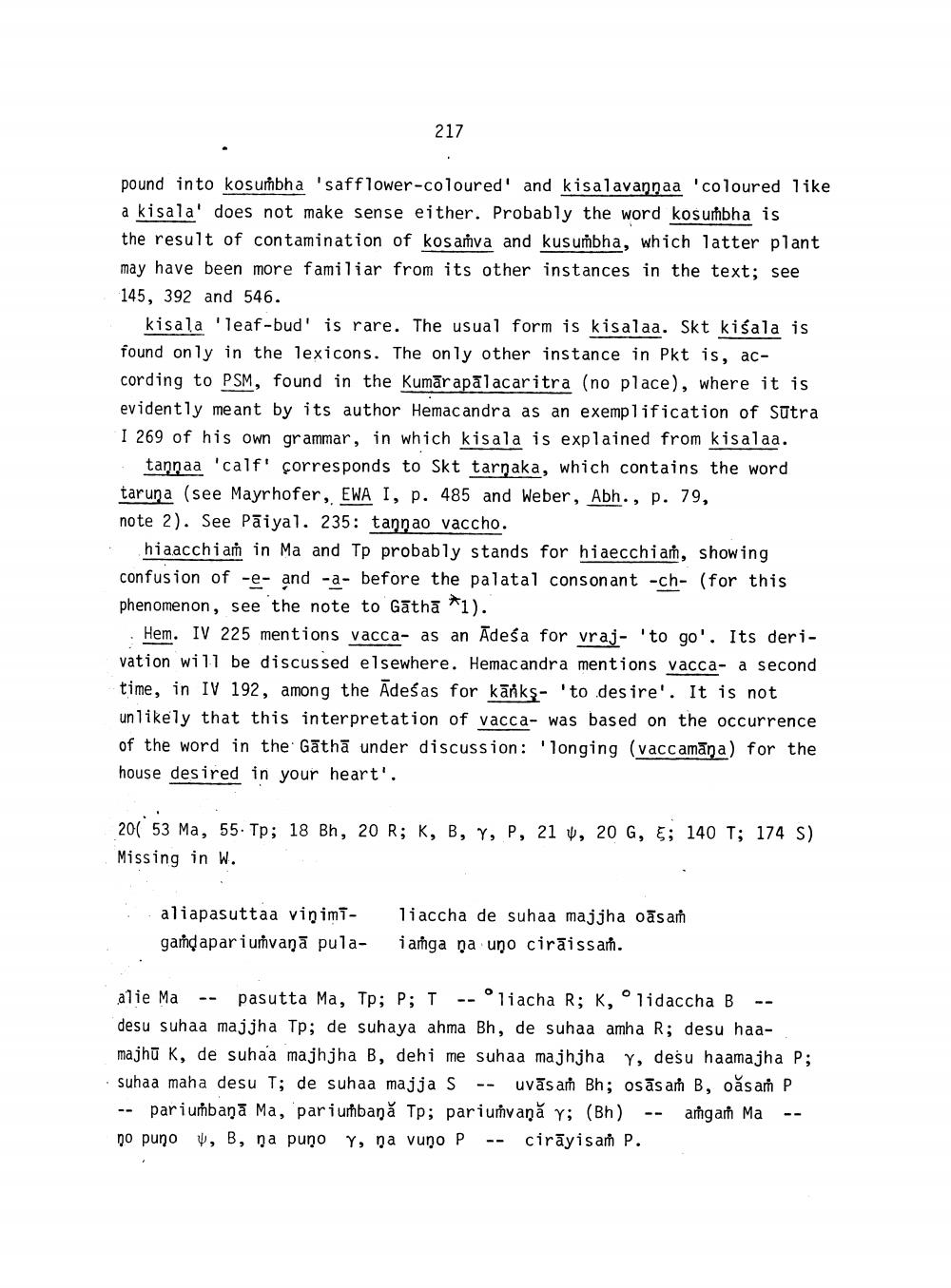________________
217
pound into kosumbha 'safflower-coloured' and kisalavannaa 'coloured like a kisala' does not make sense either. Probably the word kosurħbha is the result of contamination of kos añva and kusumbha, which latter plant may have been more familiar from its other instances in the text; see 145, 392 and 546.
kisala 'leaf-bud' is rare. The usual form is kisalaa. Skt kisala is found only in the lexicons. The only other instance in Pkt is, according to PSM, found in the Kumār apālacaritra (no place), where it is evidently meant by its author Hemacandra as an exemplification of Sutra I 269 of his own grammar, in which kisala is explained from kisalaa.
tannaa 'calf' corresponds to Skt tarnaka, which contains the word taruna (see Mayrhofer, EWA I, p. 485 and Weber, Abh., p. 79, note 2). See Pāiyal. 235: tannao vaccho.
hiaacchiaṁ in Ma and Tp probably stands for hiaecchian, showing confusion of -e- and -a- before the palatal consonant -ch- (for this phenomenon, see the note to Gatha *1).
Hem. IV 225 mentions vacca- as an Adeśa for vraj- 'to go'. Its derivation will be discussed elsewhere. Hemacandra mentions vacca- a second time, in IV 192, among the Ādeśas for kārks- 'to desire'. It is not unlikely that this interpretation of vacca- was based on the occurrence of the word in the Gathā under discussion: 'longing (vaccamāņa) for the house desired in your heart'.
201 53 Ma, 55. Tp; 18 Bh, 20 R; K, B, Y, P, 21 y, 20 G, 5; 140 T; 174 S) Missing in w.
aliapasuttaa viņimi- gaind apar i urvanā pula
liaccha de suhaa majjha oāsam iasga na uņo cirāissa.
Yom
alie Ma -- pasutta Ma, Tp; P; T -- 'liacha R; K, olidaccha B -- desu suhaa majjha Tp; de suhaya ahma Bh, de suhaa amha R; desu haamajhū K, de suhaa majhjha B, dehi me suhaa majhjha y, desu haamajha P; suhaa maha desu T; de suhaa majja s -- uvās a Bh; osās am B, oăsa P -- pariurbana Ma, pariurbană Tp; pariunvană Y; (BH) -- angari Ma -- po puno , B, na puno Y, na vuno P -- cirāyisan P.




